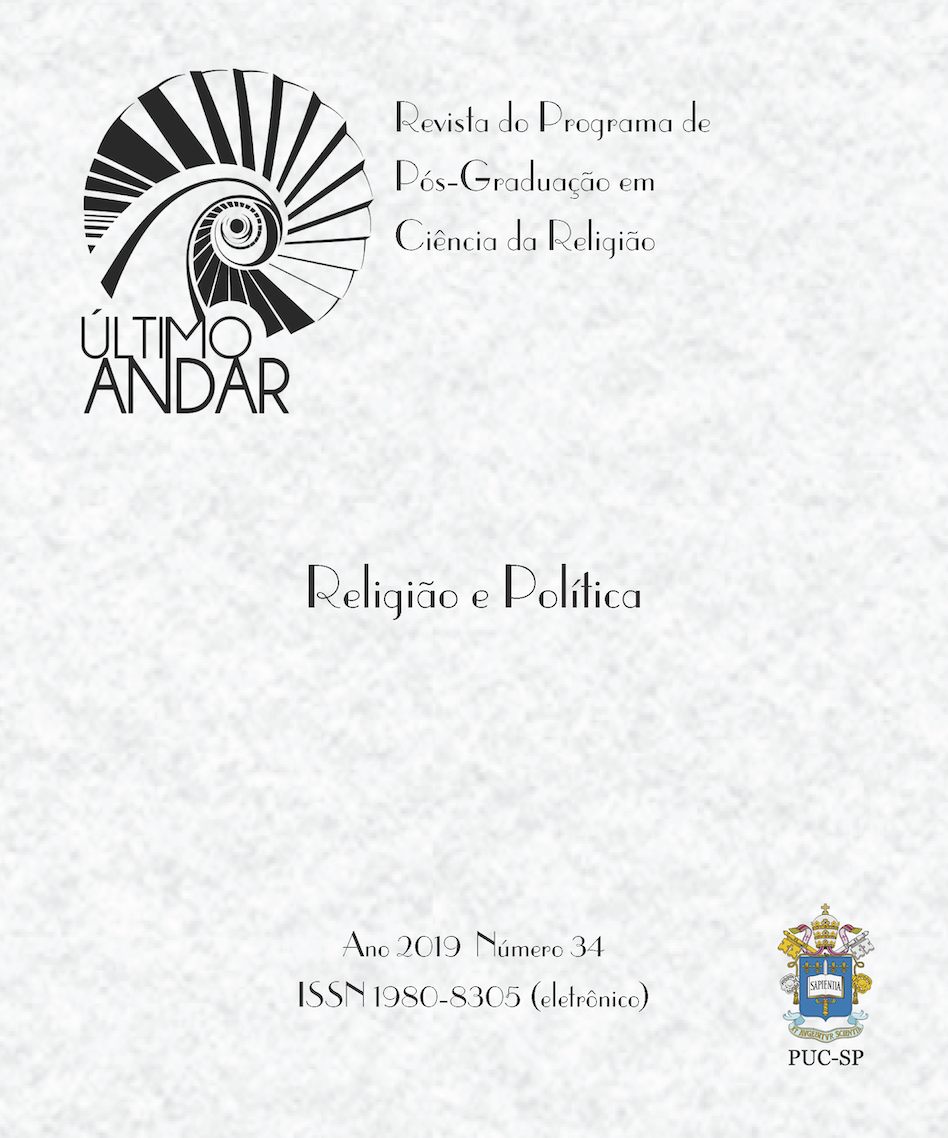A FACE DO GOVERNANTE OPRESSOR: CARACTERIZAÇÕES IRÔNICAS DOS REIS ESTRANGEIROS EM DANIEL E ESTER
DOI:
https://doi.org/10.23925/1980-8305.2019i34p55-68Palavras-chave:
Análise literária, caracterização, ironia, narrativa bíblica, opressãoResumo
Esse artigo se propõe a investigar a maneira pela qual Nabucodonosor e Assuero são caracterizados na narrativa dos livros de Daniel e Ester. Para isso, ele parte de uma perspectiva literária da narrativa bíblica e procura caracterizar os personagens por meio do seu discurso, ação, ponto de vista, destino e situações que enfrenta. O trabalho assume que a ironia cumpre um papel fundamental nas caracterizações de reis opressores e sintetiza as principais ironias encontradas em cada personagem. O trabalho conclui que caricaturar o opressor com ironia e comicidade é um ato de resistência.
Referências
ALTER, Robert. A Arte da Narrativa Bíblica. São Paulo: Companhia das Letras, 2007. AVALOS, Hector. The Comedic Function of the Enumerations of Officials and Instruments
in Daniel 3. In: Catholic Biblical Quarterly, vol. 53, n. 4, 1991.
BAR-EFRAT, Shimon. Narrative Art in the Bible. Sheffield: Sheffield Academic Press, 1989.
BERLIN, Adele. Poetics and Interpretation of Biblical Narrative. Sheffield: Almond Press, 1983.
DAY, Linda. Power, Otherness, and Gender in the Biblical Short Stories, Horizons in Biblical Theology, n. 20 (Dec. 1998), pp. 109-127.
FEWELL, Danna Nolan. Circle of Sovereignty: Plotting Politics in the Book of Daniel. Nashville: Abigton Press, 2a Ed, 1991.
FREUD, Sigmund. Jokes and Their Relation to the Unconscious. New York: W.W. Norton, 1960.
GOLDMAN, Stan. Narrative And Ethical Ironies in Esther. Journal for the Study of the Old Testament, n. 47, 1990, pp. 15-31.
GREENSTEIN, Edward L. A Jewish Reading of Esther. In: Neusner, J; Levine, B; Frerichs, E. Judaic Perspective on Ancient Israel. Philadelphia: Fortress Press, 1987, pp. 225-243.
GROSSMAN, Jonathan. Esther: The Outer Narrative and the Hidden Reading, Pennsylvania State University Press, 2011.
HUMPHREYS, W. Lee. A Life-Style for Diaspora: A Study of the Tales of Esther and Daniel.Journal of Biblical Literature. vol. 92, no. 2 (Jun. 1973), pp. 211-223.
JOBES, Karen H. The NIV Application Commentary: from biblical text... to contemporary life Esther. 1. ed. Michigan - EUA: Zondervan, 1999.
LIMA, Anderson. A Bíblia como literatura – A Bíblia como ficção. In: Estudos de Religião, v. 29, n. 1, 2015. p. 153-168.
MARGUERAT D.; BOURQUIN Yves.; DURRER M. How to Read Bible Stories: An Introduction to Narrative Criticism. Albans Place, London: SCM Press, 1999.
MILLS, Mary E. Household and Table: Diasporic Boundaries in Daniel and Esther. The Catholic Biblical Quarterly. V ol. 68, No. 3 (July 2006), pp. 408-420.
SASSON, Jack M. Ester. In: ALTER, Robert; KERMONDE, Frank (Ed.). Guia literário da Bíblia. Trad. Raul Fiker. São Paulo: Editora Unesp. 1997, p. 359-367.
SHARP, Carolyn, H. Irony and Meaning in the Hebrew Bible. Bloomington: Indiana University Press, 2009.
STERNBERG, Meir. The Poetics of Biblical Narrative. Bloomington: Indiana University Press, 1985.
Downloads
Arquivos adicionais
Publicado
Como Citar
Edição
Seção
Licença
Autores que publicam nesta revista concordam com os seguintes termos:
- Autores mantém os direitos autorais e concedem à revista o direito de primeira publicação, com o trabalho simultaneamente licenciado sob a Licença Creative Commons Attribution que permite o compartilhamento do trabalho com reconhecimento da autoria e publicação inicial nesta revista.
- Autores têm autorização para assumir contratos adicionais separadamente, para distribuição não-exclusiva da versão do trabalho publicada nesta revista (ex.: publicar em repositório institucional ou como capítulo de livro), com reconhecimento de autoria e publicação inicial nesta revista.
- Autores têm permissão e são estimulados a publicar e distribuir seu trabalho online (ex.: em repositórios institucionais ou na sua página pessoal) a qualquer ponto antes ou durante o processo editorial, já que isso pode gerar alterações produtivas, bem como aumentar o impacto e a citação do trabalho publicado.


